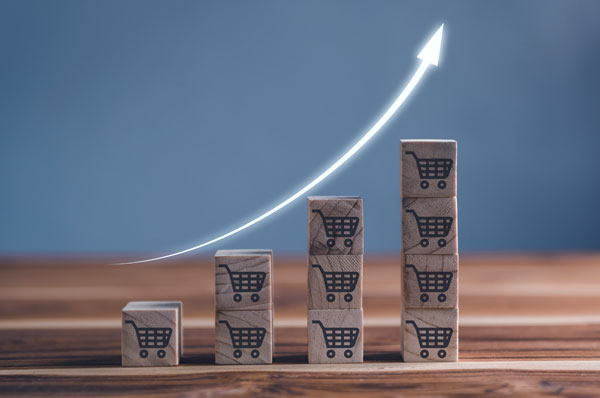Growth is a great indication that your retail business is enjoying success. However, it’s also a means to enjoy even more success.
But what does growth mean? Years ago, it simply meant adding more staff, more locations, and maybe more products to your catalog. These days, it’s so much more than that.
Today, growing your retail business means being successful both in the e-commerce space and in your traditional retail space.
To do that, you need to embrace an omnichannel philosophy that connects all of your retail channels. You need to present a consistent customer experience across all channels so that your shoppers will know that they can expect the same high quality no matter how they’re interacting with your brand.
Simply put, if you’re not already using an omnichannel approach to retail, now is the time to start. We’ve provided some tips to help you along below.
How to Set Up E-Commerce for Your Retail Business
E-Commerce is essential in today’s market. Shoppers love the convenience and the easy access to such a huge selection of products. By creating an online storefront for your retail business, you’re getting access to all of these shoppers.
But how do you go about setting up e-commerce? Well, from a very high-level point of view, it’s not as hard as you might think.
First, you’ll want to choose an e-commerce platform. Think of this as a sort of foundation upon which you’ll be building your online storefront. Some businesses choose to start their online journey by selling their products through marketplaces like Amazon. This can be both good and bad, depending on what you’re looking for.
The benefits of choosing a platform like Amazon include access to a huge customer base, convenience in terms of functionality, and access to a suite of included tools and software.
The challenges include the huge amount of competition you’ll face from other stores on the platform. You’re also going to be more restricted with how much you can customize your site. And, of course, you’ll have to pay Amazon’s seller fees.
You can also choose an e-commerce platform that allows for more customizability. This means you can have total control over crafting the entire customer journey from the second they hit your site to checking out. That can be daunting for some, but if you have a strong vision for your online store then that could be the way to go for you.
Of course, there’s a lot more to setting up your e-commerce than just choosing a platform and building your site. You’ll also need the right software to help you manage your data and your omnichannel capabilities.
While many platforms will come with their own included tools, such as PIM and CRM software, these pre-assembled solutions might not be the best fit for your business needs.
We often recommend what’s called a composable commerce solution. Essentially, composable commerce means a package composed of the best-in-class software for your needs. That way, you’re getting the right tools for the job.
How to Set Up a BOPIS System for Your Retail Business
One of those tools you’ll need to think about is a BOPIS system. BOPIS stands for “Buy Online, Pick-up In-Store,” and it’s an extremely efficient way to boost sales.
The benefits of BOPIS are many, but the standout is the fact that you’re simultaneously increasing customer satisfaction and cutting down on costs.
Especially in these past couple of years, people have grown wary in some situations at the thought of shopping in a crowded physical store. However, shipping means waiting for delivery, and that can take weeks. By offering BOPIS, you’re allowing the customer to shop from the comfort of their own homes, and then they’re able to get their item on their own schedule.
The way it saves money for your business is a cut in shipping costs. While you might have to ship from one store to the other, you won’t have to worry about shipping to the customer.
BOPIS is an example of truly practical omnichannel enhancement to your business.
To set up BOPIS, you’ll first need to make sure that your online platform is capable of allowing customers to select BOPIS at checkout.
Secondly, you’ll have to find a way to integrate three separate systems so that they can work together seamlessly. These systems are as follows:
- The system where you accept the order on your online store
- The system that manages and holds your inventory
- The system where you fulfill the orders
Basically, you want your customer-facing storefront to be able to interact with both your inventory management system and your order fulfillment system. Doing this will be a big step toward realizing the omnichannel philosophy, and it will only help your business grow in the long run.









